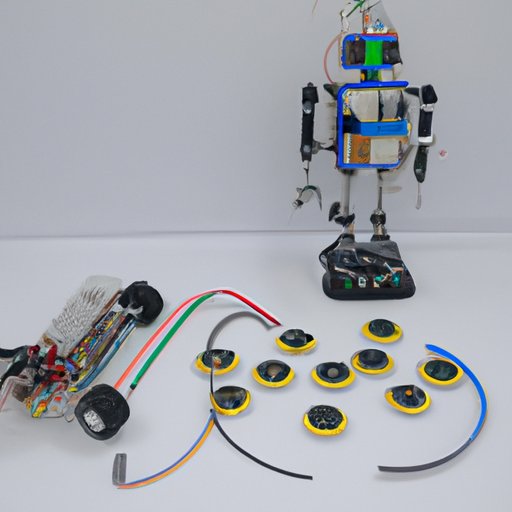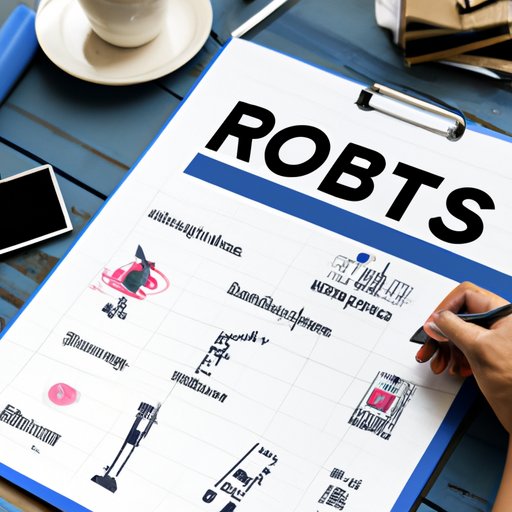Introduction
Robotics is the science and engineering of creating machines that can interact with their environment and perform tasks autonomously or semi-autonomously. It involves a combination of disciplines such as mechanical design, electronics, programming, control theory, and system design. This article will explore what to study for robotics in order to gain a comprehensive understanding of the field.
Identifying Key Areas to Study for Robotics
When studying robotics, it is important to identify the key areas that will provide a comprehensive understanding of the field. These include mechanical design, electronics, programming, sensors and actuators, control theory, and system design.
Mechanical Design
Mechanical design is the process of designing, analyzing, and manufacturing robotic components and systems. This involves understanding the principles of mechanics, materials science, and structural analysis. It also includes methods for analysis, optimization, and design of robotic systems.
Electronics
Electronics is the branch of science and technology that deals with electrical circuits and components. It is essential for understanding the operation of robots and their components. Knowledge of electronics is required for the design, construction, and maintenance of robotic systems.
Programming
Robots require programming in order to function properly. Programming involves writing code to control the behavior of robots. It requires knowledge of computer science, software engineering, and algorithms. Programming languages commonly used for robotics include C/C++, Python, and Java.
Exploring Robotics Programming Languages
C/C++ is a popular programming language for robotics due to its efficiency and flexibility. It is a low-level language, meaning it gives the programmer direct control over how the robot behaves. The language is highly portable and can be used on multiple platforms.
Python is an interpreted high-level language that is becoming increasingly popular for robotics. It is easy to learn and offers powerful features such as object-oriented programming and dynamic typing. Python is also well-suited for rapid prototyping of robotic systems.
Java is another high-level language that is often used for robotics. It is a platform-independent language, meaning it can be used on any operating system. Java enables developers to create robust robotic applications with ease.

Understanding Robotics Sensors and Actuators
Sensors are devices that detect changes in the environment and convert them into electrical signals. They are essential for robots to perceive their environment and respond accordingly. Common types of sensors used in robotics include infrared, ultrasonic, and force sensitive.
Actuators are devices that convert electrical energy into mechanical motion. They are used to control the movement of robotic systems. Common types of actuators used in robotics include motors, servos, and solenoids.
Examining Robotics Control Theory
Control theory is the study of how to control a system in order to achieve desired objectives. It is an essential part of robotics, as robots must be able to accurately sense and react to their environment. Key topics in control theory include control systems, path planning, and navigation.

Analyzing Robotics System Design Strategies
System design is the process of designing and developing robotic systems. It involves selecting appropriate components, integrating them into a functioning system, and testing and verifying the system. System design is a critical step in creating successful robotic systems.
Conclusion
Robotics is a complex and multifaceted field that requires knowledge of many disciplines. In order to gain a comprehensive understanding of robotics, it is necessary to understand the key areas of mechanical design, electronics, programming, sensors and actuators, control theory, and system design. By exploring these topics, one can develop the skills and knowledge needed to build successful robotic systems.
It is also important to keep up with advances in technology and stay current with new developments in the field. There are numerous resources available online and in print to help with this. Finally, it is recommended to practice building robotic systems in order to gain hands-on experience.
Summary of Key Points
In summary, the key areas to study for robotics include mechanical design, electronics, programming, sensors and actuators, control theory, and system design. It is also important to stay current with advances in technology and to practice building robotic systems.
Recommendations for Further Learning
To further develop one’s understanding of robotics, it is recommended to read books and articles on the topic, watch tutorial videos, participate in online forums and discussion groups, and attend conferences and workshops. Additionally, it is beneficial to work on projects with other enthusiasts and collaborate with experts in the field.
(Note: Is this article not meeting your expectations? Do you have knowledge or insights to share? Unlock new opportunities and expand your reach by joining our authors team. Click Registration to join us and share your expertise with our readers.)
